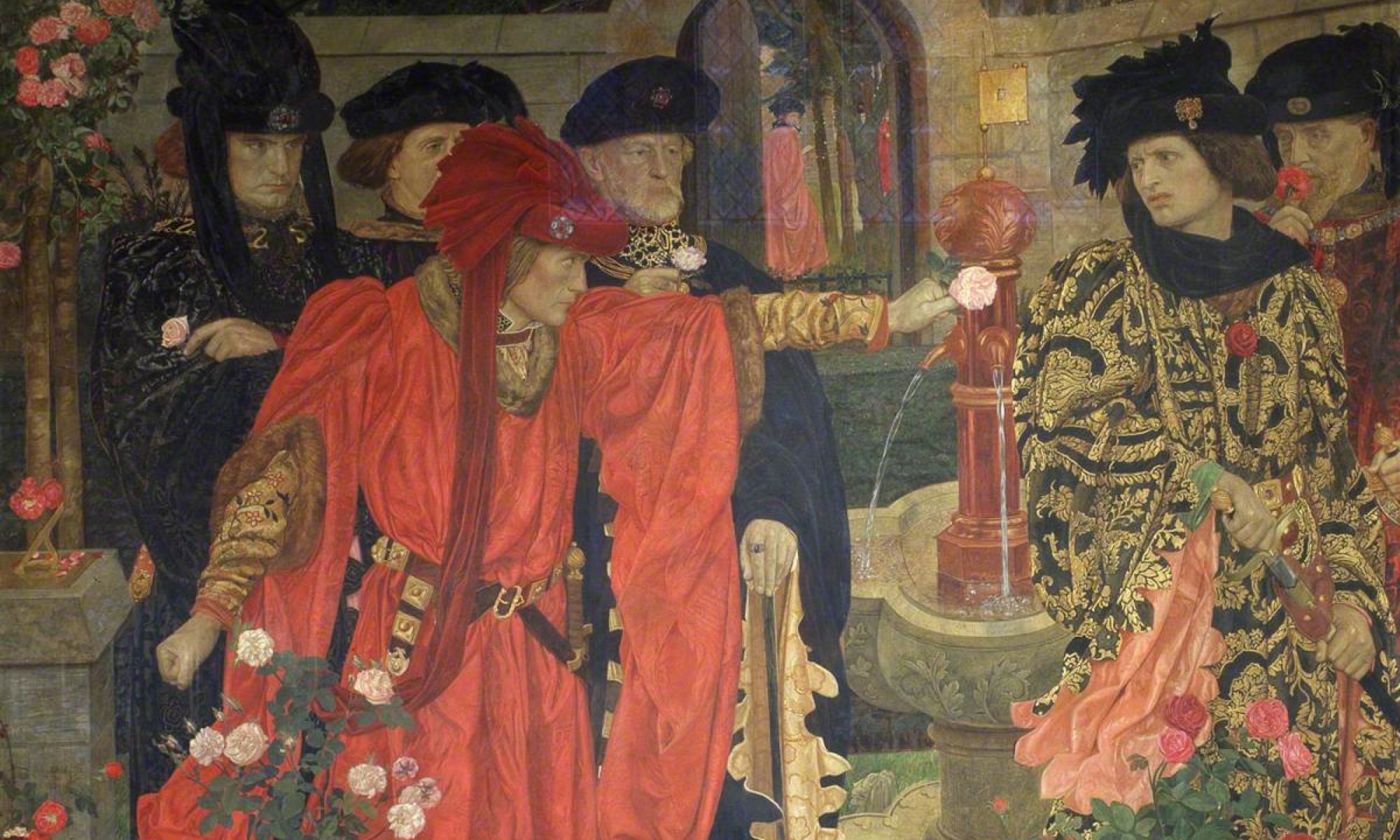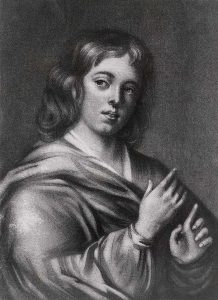Much of the world that George R. R Martin creates in Game of Thrones is based on real history, at least to some extent. Admittedly there were no fire breathing dragons or death-defying white walkers in the early modern period, but parallels can certainly be drawn between medieval England’s War of the Roses and Martin’s medieval yet fantastical Westeros.
Martin often chooses to base his characters upon real figures who lived and fought during the War of the Roses and it is also the time period in which Mary Pix’s Queen Catharine is set. Characters burst into life from the pages of history with Martin choosing their new paths.
The Lancasters are the Lannisters.
The Yorks are the Starks.
But it’s really not that clear cut. Sides were changing, allegiances were destroyed and lives were lost – all in a quest for power.
Leading figures from the Wars of the Roses appear in Queen Catharine. Versions of these figures also appear in Martin’s writing, where they go by the names of Robb Stark and Robert Baratheon; Tyrion Lannister; Sanza; Walder Frey; and, breifly, Cersei.
Game of Thrones War of the Roses
Robert Baratheon/Robb Stark Edward IV
Robert Baratheon and Robb Stark display Edward IV in different stages of life and maturity (if Robert Baratheon could be called mature). Baratheon is often seen to be the character mostly directly inspired by history and with his *spoiler alert* early death in the series, Martin was able to play around with the character whilst still remaining true to history. In the words of Robert himself, he is happy to let others ‘run my kingdom while I eat, drink and whore my way to an early grave’[1], which is exactly what he did. So did Edward IV.
Although Baratheon poses more similarities to Edward IV in history, there are, in Queen Catharine, more comparisons to be drawn between the young Edward IV and Robb Stark. Edward’s opening speech presents him as a man of immense power, with friends who are ‘worthy’[2] of him, describing himself as having ‘the Force and Arm of Hercules’[3]. Although Rob is more subdued than Edward, he is brave and strong and wins every fight. These large egos are both entwined with bitterness, with Edward’s entire storyline resting upon his anger towards Queen Catharine for rejecting him. This anger comes hand in hand with shame and leads to him *spoiler alert* kill her lover Owen Tudor. This can also be seen in Robb Stark’s overarching storyline, although his reason for revenge is much more substantial: to avenge his father Eddard Stark who died at the hands of the Lannisters (or, perhaps, ‘Lancasters’). Pix depicts Edward IV as a petty man, unlike Martin, relying heavily upon other characters to do his dirty work, including the Duke of Gloucester and the Earl of Warwick. My comparison breaks down a little here as this is a contrast with Robb, who takes control and leads from the front. Yet both Robb and Edward were particularly successful in battle (much to the disappointment of their enemies), and although we don’t see Edward fighting in Queen Catharine, he is successful in his quest for revenge. Robb, on the other hand, is less successful, *spoiler alert* dying in his unfulfilled quest for revenge at the hands of Walder Frey (Earl of Warwick), who ironically is on the same side as Edward IV in Queen Catharine.
Tyrion Lannister Richard III
Both Tyrion and the future Richard III (known as the Duke of Gloucester in Queen Catharine) are described as being ‘monstrously deformed’[4] and are easily cast as villains. Richard III was even written about by Shakespeare, where he is depicted as being one of the foulest villains in English history. They are both figures whose real lives are unclear due to the lies and rumours that were spread about them. They were despised by their respective countries and unloved by their families, with Richard having two large uprisings against him during his reign and Tyrion switching allegiances, they led difficult lives. Richard may have been more fitted to the stereotype of a power-hungry, scheming man than Tyrion, as displayed in Queen Catharine when he calls Edward ‘Godlike’[5] and offers to dispose of Owen Tudor, simply to gain the approval of Edward and be seen as his ‘faithful Brother’[6]. Richard was clearly hated, as he was buried in an unmarked area in Leicester after his death in battle and although Tyrion is still alive and many viewers’ favourite character, his rebellion against his own family may gain him the same respect as Richard in death: none.
Perhaps the similarities between Tyrion and Richard lie only in their described appearances, as although both are seeking power, Richards self-centred scheming way of doing so contrasts Tyrions morally correct ‘for-the-people’ attitude.
Walder Frey Earl of Warwick
Although fans have made comparisons between Walder Frey and the Earl of Warwick, the similarities are few and far between when it comes to the depiction of Warwick in Queen Catharine. In real life, both were only out to gain power (an overarching theme in both Game of Thrones and Queen Catharine it seems), but this isn’t the Earl of Warwick intention within the play, arguably because he has reached old age (hence Edward Kynaston playing him). Both the Earl and Walder Frey are small parts but where they do get involved damage and loss seems to follow. Walder Frey is a power hungry character shown particularly in his lead in arguably the most shocking Game of Thrones episode – the Red Wedding. Walder Frey commits the ultimate betrayal switching from Stark to Lannister and in doing so *spoiler alert* kills multiple members of the Stark family. The Earl commits the same betrayal during the War of the Roses. During Queen Catharine the Earl is still in allegiance with the Yorks, indicating that the play is set before his betrayal (but Queen Catharine is arguably not historically correct). He is present for much of the action and involved in the central focus of the plot unlike Walder Frey who is often sidelined and features rarely. Both the Earl and Walder Frey are ignored many times as they give unwanted advice, with Warwick saying ‘you were offered… aid, which you despised’[7] and Walder Frey stating ‘they’re laughing at us!… right down to King’s Landing, they’re laughing’[8]. Walder Frey is more bitter than the Earl of Warwick, but their shared need to be on the winning side shows how petty and similar these characters really are.
Sanza Isabella
Both of these passive females are traded around for political gain. Isabella is an altogether weaker character than Sanza, however, as she is reliant on people who have more power than her: Queen Catharine and the Duke of Clarence. This weakness is epitomised in her forced marriage to Sir James Thyrolld, where it would ‘never have come to this’ if her ‘Beauty was no greater than [her] politicks’[9]. Sanza, in much the same manner is forced to marry Joffrey and Ramsey Bolton, who are arguably the two most evil characters in Game of Thrones. Each time, though, Sanza *spoiler alert* overpowers them, whether purposefully or not; Isabella, on the other hand, dies a lost cause.
Cersei Lannister Margaret of Anjou
Although she doesn’t make an appearance in the play itself, Margaret is mentioned several times in reference to her power and authority, in much the same way as Cersei. Both of these strong female figures use their weaker-willed royal husbands (Robert Baratheon and Henry VI) to gain more power than they are entitled to as women. It is seemingly unclear as to who is in charge, with Owen Tudor stating ‘lead your forces to the Camp of Henry or Margaret, I know not what to call it’[10] and Cersei stating herself ‘I should wear the armour and you the gown’[11]. These two ruthless females’ only redeeming quality lies in their motherly nature, with their immense love for their children being their only sign of humanity. Both of these women defy the passive female stereotype which is employed throughout their respective periods of history, taking their fates into their own hands, and often being more successful than the men.
The Wars of the Roses were an unpredictable time of betrayal, love and war, and now many see in it a way to determine the future of Game of Thrones. George R. R Martin on the other hand, says:
It’s exciting because I can change history, I can decide who’s going to win and who’s going to die.
[1] Game of Thrones, dir. by Tim Van Patten (HBO, 2011). Season 1, Episode 1.
[2] Mary Pix, Queen Catharine: or, The Ruins of Love, a Tragedy’ (London, 1698), p. 1.
[3] Pix, ibid.
[4]Jeffrey R. Wilson, ‘Richard III’s Deformities’ in Harvard University Online (The President and Fellows of Harvard College, Harvard Univeristy, 2018).
[5] Pix, p. 5.
[6] Pix, ibid.
[7] Pix, p. 25.
[8] Game of Thrones, dir. by Jack Bender (HBO, 2016). Season 6, Episode 6.
[9] Pix, p. 42.
[10] Pix, p. 19.
[11] Game of Thrones, dir. by Daniel Minahan (HBO, 2011). Season 1, Episode 6.


